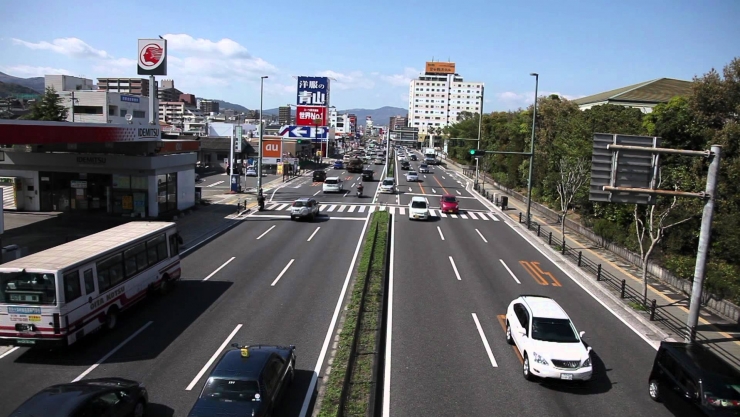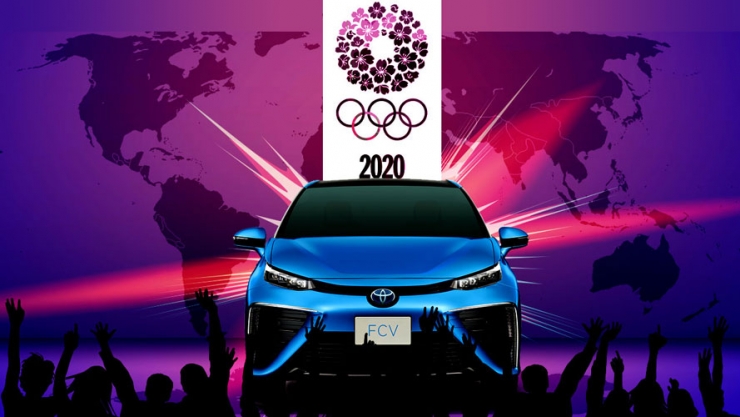
Last week, Apple silently shut down some of the driverless cars, adjusted the direction of the project and laid off 10 employees. Even Apple is rethinking the vehicle building program, which shows that the overheated development of unmanned vehicles is thought-provoking. Unlike Mercedes-Benz, BMW, Audi, Volvo, GM, Ford, and other high-profile European and American car companies, Japanese car companies are very "slow" in driverless performance. In Japan, where the automobile manufacturing industry is developed, technologies such as cameras, sensors, radar, and GPS positioning have long been available, but they are still cautious in self-driving cars.
In March 2015, Toyota, which had always been low-key, reached a cooperation agreement with the International Olympic Committee and became the top sponsor of the Olympic Games. To this end, Toyota will pay nearly 835 million U.S. dollars (equivalent to 5,177 million yuan). The agreement is valid until 2024. The Toyota Group will also provide road safety vehicles, public transportation services, and mobile product support for the Olympic Games. Toyota is also the first car company to become the top sponsor of the Olympic Games. Toyota Group President Toyoda Mano said: "With the help of this sports event, it will help Toyota Group to better demonstrate its own technologies, including fuel cell technology and automation. Driving technologies, new energy technologies, etc. also contribute to the Toyota Group's market expansion."
Hiring an autopilot expert
In November 2015, Toyota announced that in the next five years, Toyota will initially invest US$1 billion in the research and development of operating expenses for unmanned and robotic institutions. The headquarters of the company, which is based in Silicon Valley, is called the Toyota Research Institute (TRI). .
The CEO of TRI is the artificial intelligence top expert Gill Pratt. Before that, he was responsible for the development of the robot at DARPA. In September 2015, he was led by Toyota Akio; COO was Eric Korotenko. Eric Krotkov is a senior research scientist at Carnegie Mellon University and head of DARPA's mobile robot program. He has strong advantages in image vision and artificial intelligence; CTO is James Kuffner's Google robot project. Co-founder and CEO, is a cloud-based artificial intelligence (AI) expert.
In fact, Toyota has almost hollowed out Google's robot team. In March 2016, Toyota announced that the software engineering group of Jay Bridge Robotics, a software development company that has hatched from MIT, will join TRI, which was established in the United States in January 2016. The 16 engineers of Jay Bridge Robotics will team up with researchers from TRI to collaborate on product development and testing of self-driving cars.
Cooperate with universities to establish 3 institutes
Recently, Pratt, the CEO of the Toyota Motor Research Institute (TRI), publicly stated: "In the next four years, we will invest US$22 million in cooperation projects with the University of Michigan to accelerate the research and development of artificial intelligence, self-driving cars and robots."
In addition, Toyota has established 3 research institutes.
150-person Palo Alto (Palo Alto, CA) Assisted Driving Research Team
50-person Cambridge (Cambridge College, Massachusetts) Simulation and Deep Learning Team
50-person Ann Arbor (Ann Arbor Institute, Michigan) Autopilot Team
Stanford University team will be responsible for the development of semi-automated automotive-related technology, MIT is engaged in the development of machine learning technology, the University of Michigan team will be responsible for fully automated cars. The three research institutes of the Toyota Research Institute have different research focuses around the field of automated driving technology.

Conservative dual mode
In fact, Toyota has already laid a long way for autonomous driving. In January 2016, Thomson Reuters released a report. In the research and development of driverless car technology, automakers are ahead of Silicon Valley Technology Corp., and the Japanese auto maker Toyota is at the forefront. Through this report, it can be seen that Toyota is ahead of other companies in the number of patents for driverless cars and has more than 1,400 patents related to it, at least more than twice the number of patents of other companies.
Toyota’s driverless program is divided into two projects. One is the Guardian Angel project. The driving of the car is basically the responsibility of the person. When a dangerous situation occurs, the AI ​​provides assistance to people. The other is the Chauffer project. The AI ​​is solely responsible for the driving of the car, that is, driverless. Assisted driving allows people to first adapt to the computer's assistance, and allows the computer to collect data in a large number of actual driving processes, thereby enhancing the effectiveness of driverless artificial intelligence technology.
Toyota's president Akio Toyoda said his four major tasks are
To achieve security
Provide a good road environment
Transportation for all
Have fun driving
The first goal that the guardian angel model (assist driving) can achieve is to achieve driver safety and enjoy driving pleasure.
The two responsible for the work of the two projects were Ryan Ustis and Edwin Olsen, professors at Michigan State University. The two professors just joined Toyota Motors this year. Eustatis said: "In reality, I don't think any automaker will be able to publish a car that can achieve L4 autopilot everywhere. This is a great goal, but within a certain range of areas. The L4-class self-driving Toyota Motor can be achieved within 5 to 10 years.†Of course, the Toyota’s standard of commercialization of automatic driving technology has always been the top L4 level.
Japanese government support
In addition to the autopilot technology of the automobile itself, the road environment and the network environment of the automobile are also under harsh conditions. According to a report released by the Boston Consulting Group, network security, high-precision digital maps, and V2X (vehicle-to-vehicle and vehicle-to-base-station communication technologies) are among the important factors driving the commercialization of self-driving cars. Take the high-precision map as an example, the error cannot be greater than 10 cm. If the deviation is large, the self-driving car will directly collapse.
This month, Japan began to develop 3D city road maps to provide assistance for self-driving cars on the road. Japan currently covers 1.27 million kilometers of expressways, including about 30,000 kilometers of expressways. The Japanese plan will cost 1 billion yen. The Japanese government is preparing to make driverless taxis available at the Tokyo Olympic Games. Previously, Toyota officially announced a concept taxi designed for the Japanese mainland, named JPNTaxi, which will be put into operation in April 2018 and will serve the 2020 Tokyo Summer Olympics.
TRI CEO Pratt pointed out: "Japanese companies and Japanese are conservative, especially in the face of major decisions, the speed of decision is relatively slow. However, once he has made a decision, he will go all out to persist until the end success."
Dong Changzheng, executive deputy general manager of Toyota Motor (China) Investment Co., Ltd., said: "Toyota believes that 100% technology without problems will be widely promoted and pushed to users. Instead of starting with this advanced technology, it will start immediately. Publicity: Toyota does have a lot of advanced technology that it does not say to the outside world, but it is not enough to reach every user."
In addition to retaining Toyota, other Japanese car companies will also compete in unmanned technology. The iconic innovation of the 1964 Tokyo Olympics was the Shinkansen high-speed train. Then, the iconic innovation of the 2020 Tokyo Olympics will be self-driving cars.

Solar Panel,High Quality Solar Panel,Solar Panel Details, CN
Wuxi Shengda Yukun Energy Development co.,Ltd , https://www.xlite-solarlight.com